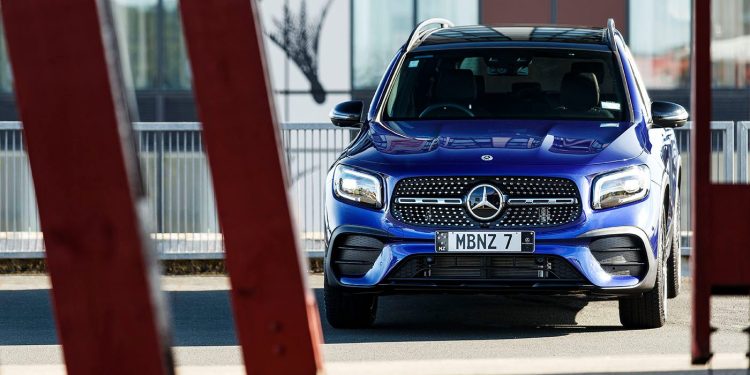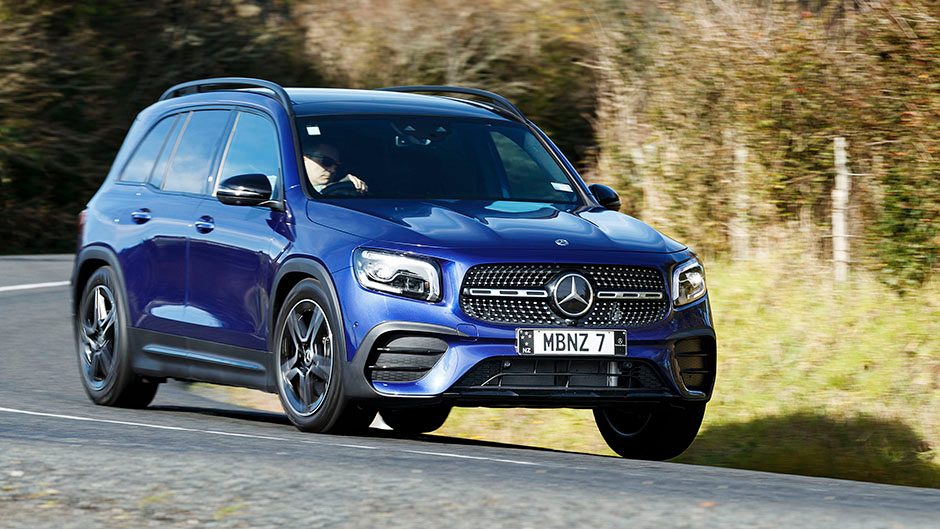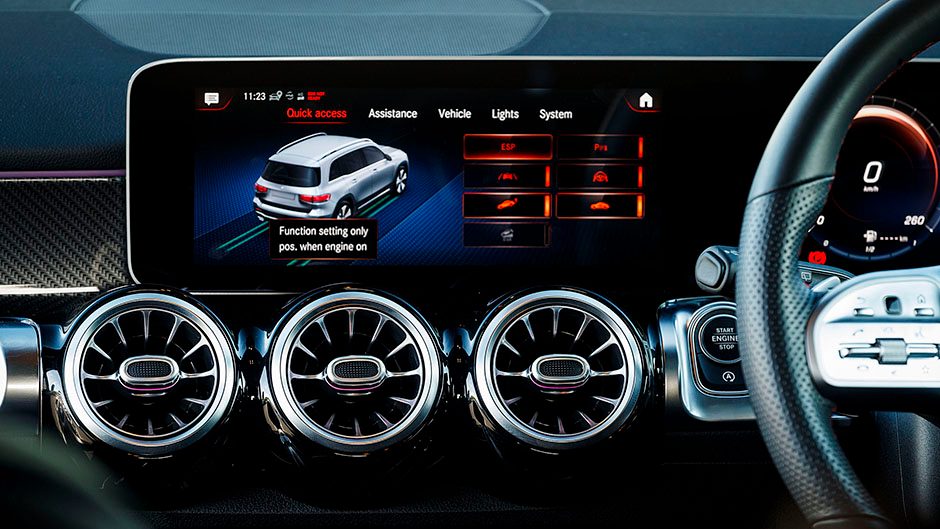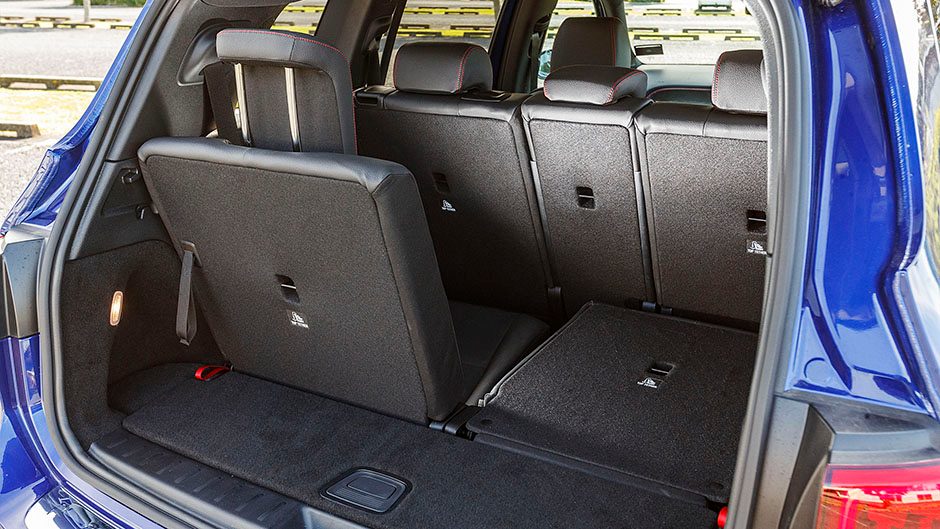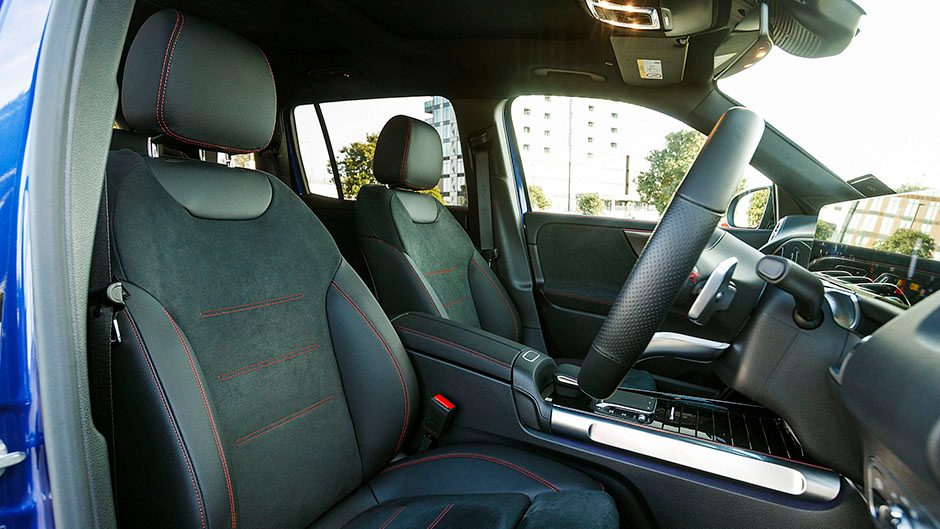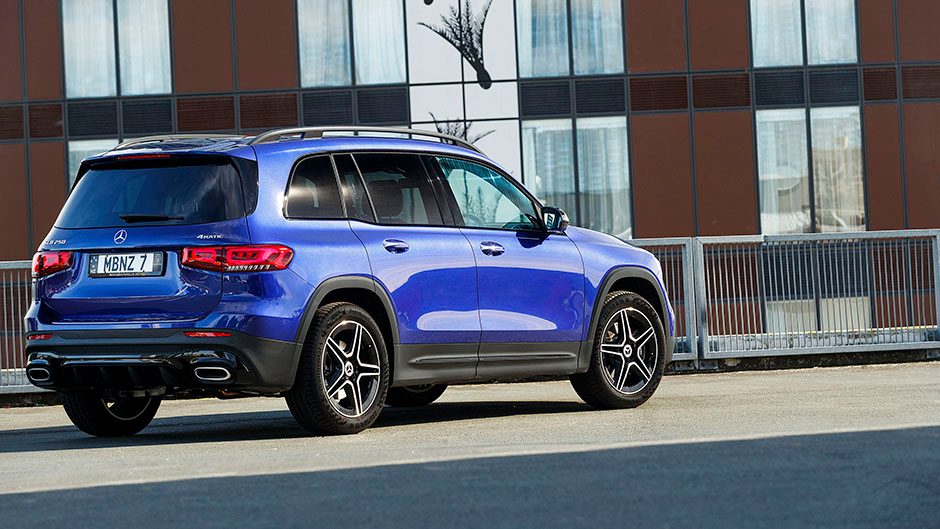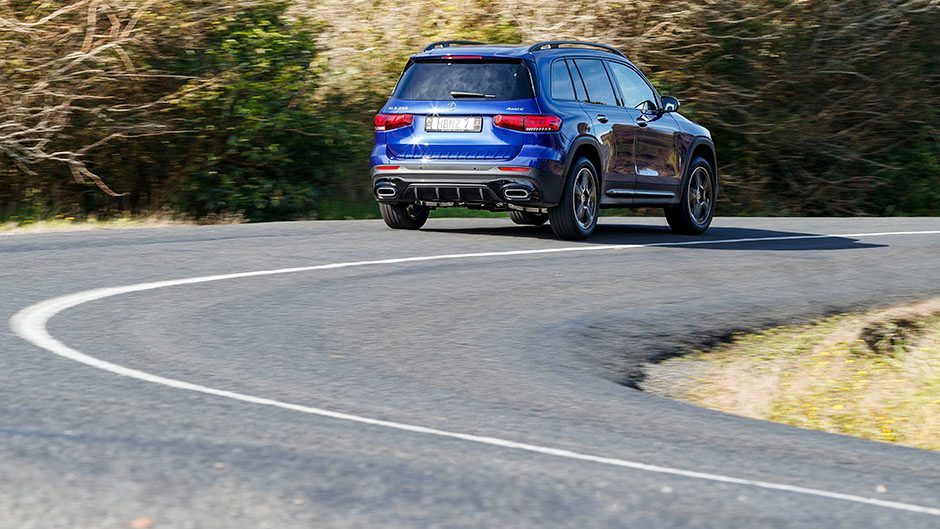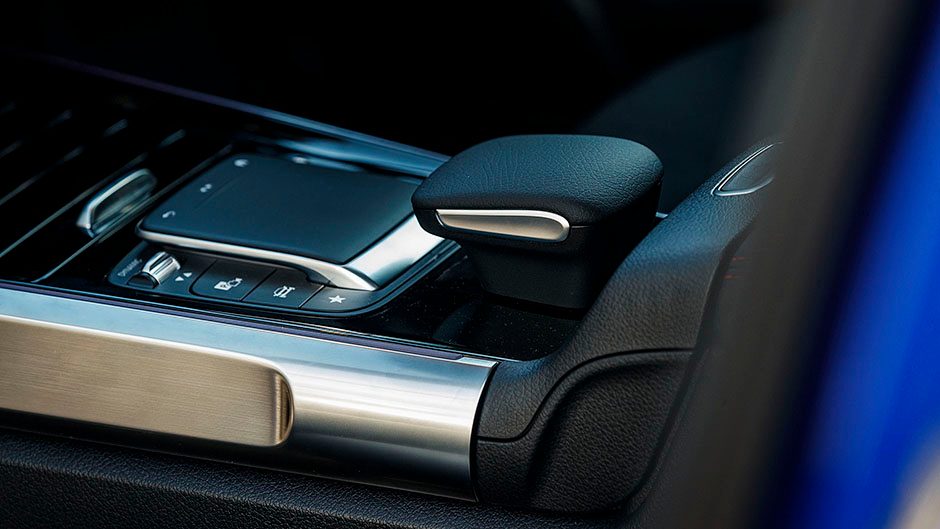2020 Mercedes-Benz GLB 250 review
Words Kyle Cassidy | Photos Tom Gasnier
Mercedes-Benz adds another SUV to its line-up, the latest being the GLB. It’s packing seven seats in a smaller package. Is it a great little bus for a family?
It can be hard to keep up with the constant flow of new models and variants, especially from makers like Mercedes-Benz. The big German is determined to fill every vehicle niche so the stream of new model releases is ongoing.
So what exactly is the GLB? It is the firm’s newest SUV slotting between GLA and GLC, joining what is now the most comprehensive line-up of high riders on the market, which ranges from the GLA to the G Wagen.
One-third of all M-B sales around the globe are SUVs but it’s more like one-half here. Benz also says its compact car range accounts for one-quarter of its sales. So another compact(ish) SUV makes sales sense then.
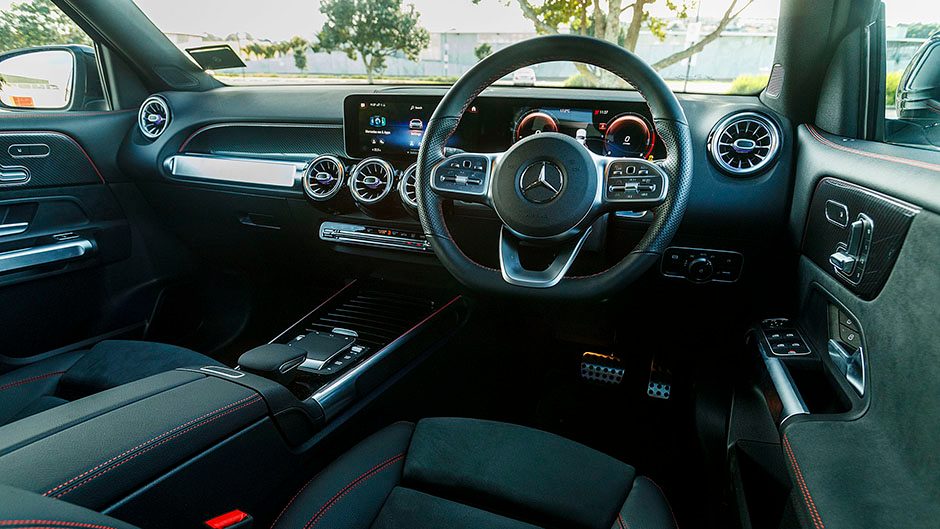
This is the eighth model from Benz’s compact car family, some of which we don’t get here, but it’s based on the same platform that underpins the A-Class hatch and sedan, the CLA variants, the GLA and also the B-Class (which is still available here, by the way).
The GLB is about the same length as an Audi Q5 at 4634mm, while its wheelbase is 100mm longer than that of the B-Class hatch. It also has seven seats, meaning you no longer have to fork out six figures for a three- row Benz. Though you still can, for while the new GLB starts at $78,900 for the 200 model, this 250 with AWD is $92,990 prior to your usual spend up on options, and the AMG 35 version goes for $104,900.
The GLB 200 is a front driver, using a 1.3-litre turbopetrol with 120kW and 250Nm mated to a seven-speed twin-clutch. It’s supposedly good for 6.5L/100km as an average. The 250 gets a 2.0-litre turbo making 165kW and 350Nm, and is claimed to average 7.7L/100km. It gains AWD, and uses an eight-speed twin-clutch. Then there’s the AMG 35 with 225kW and 400Nm, rated at 8.3L/100km. There are some diesels offered in Europe but not here, smelly things.
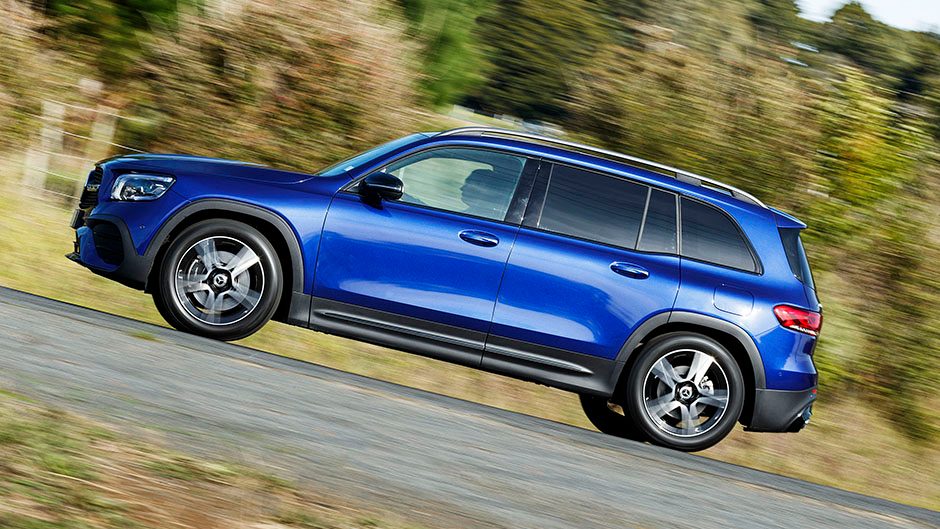
While the GLB can be had as a five- or a seven-seater overseas, only the latter will be offered here. The two seats in the rear are said to be good for people up to 1.68m tall, which is 5’5” in the old language. And so they are best left for the kids. While I managed to contort my six-foot frame into the third row seats, there’s not enough leg room back there to be seated properly. Our primary school-aged kids didn’t mind, finding enough space to be seated comfortably.
The second row does the usual seven-seater thing in terms of sliding (with up to 140mm of travel) to make extra space for those stuck in the back. These can be tilted forward to allow access to the rear, but the gap is pretty narrow. It’s easier to lower the centre section of the second row (which is handily split 40/20/40) as that allows better movement for small bods around the cabin when entering and exiting. We filled all three rows on the school run with help from the neighbours (carpooling reduces traffic congestion, don’t you know) though with all the seats in use, there’s precious little space left over in the boot, even for kid’s backpacks. You’ll have to invest in a roof box if you intend to use all the seats and travel with luggage. And you can’t take a trailer either, as there is no tow bar solution for the GLB in our market. You can fold one of the rear seats flat and there’s a reasonable cargo area. Heaven forbid you’d need them, but there are four seats with Isofix anchors, with two in the middle row and two in the rear. The third row erects and stows relatively easily, even if you need to tug on two pull tabs to get it done. USB ports are in plentiful supply to keep devices juiced, including a pair for the third row, and enough beverage holders too.
This works pretty well in five-seat mode. With the rear seat pushed right the way back it provides ample leg room, although three adults across the bench is going to be a squeeze. The boot area is spacious, at 565L up to the window line.
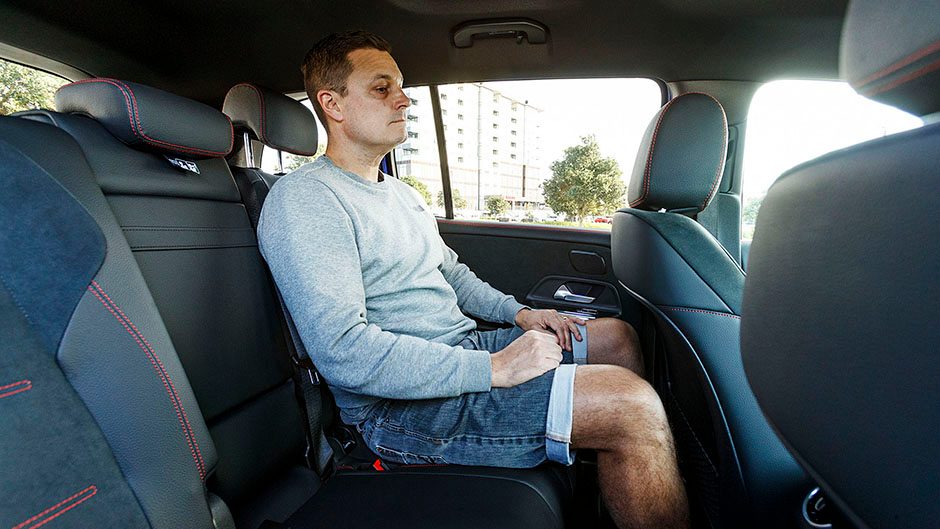
The GLB mimics the styling of the larger GLS with its boxier profile and squared off tailgate giving more headroom in the rear quarters, while the five-seat GLC has a more raked rear end. Merc wanted to imply the GLB’s off-road genes with the styling, shown via the upright front end and short overhangs. Some plastic cladding down the flanks always helps too. The doors extend down over the sills, keeping them clean, and so too your trouser legs when entering or exiting the vehicle.
The interior has clear links with the A-Class sharing a widescreen cockpit with the displays for the instruments and the infotainment system merging as one. There are some alloy-like details, the grab handles on the doors more rugged looking than your usual A-Class offerings, and the seating position is more upright. Said pews are fairly narrow and firm but offer a decent range of adjustment.
Most of the surfaces are passable for a premium offering, though there are still hard plastics about. Count on sufficient storage spots even with the main infotainment control pad hogging the centre console. But with voice control, the steering wheel-mounted buttons and the touchscreen, you seldom need the control pad. The wireless charge pad, however, is more useful. Ambient lighting puts on a show at night, changing colours while the air vents and footwells are illuminated too.
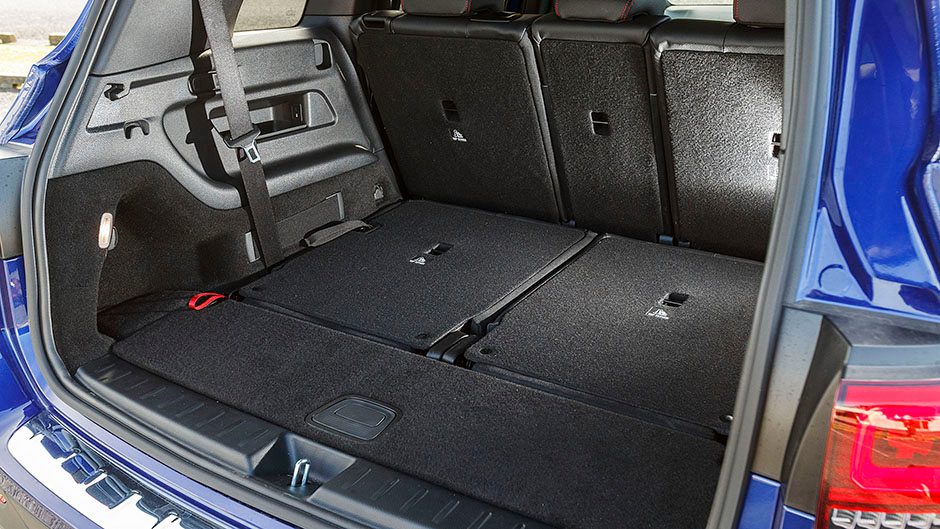
The driving assistance systems benefit from S-Class level camera and radar technology, giving the GLB the ability to ‘look’ 500m ahead of itself to adapt its speed when the active cruise is set. However, for the 250 that’s part of the $1990 Driving Assistance Pack that adds the stop and go function in traffic and route-based speed adaption so it can slow for the curves and intersections ahead.
Standard features include AEB, nine airbags with the curtain bags extending to those in the third row, traffic sign recognition and blind spot monitoring, which also issues an alert if you open your door and it senses oncoming traffic. The active lane keeping needs a rethink though; it aggressively brakes one side of the car to yank it back on line, so we usually switch that off.
It’s about the only thing that really grates with the GLB on the move. For it does ride well, the suspension being rather cushy. It feels almost too aloof at first but as the 250 has adaptive adjustable dampers, you can firm things up if you’d prefer more starch in your stride.
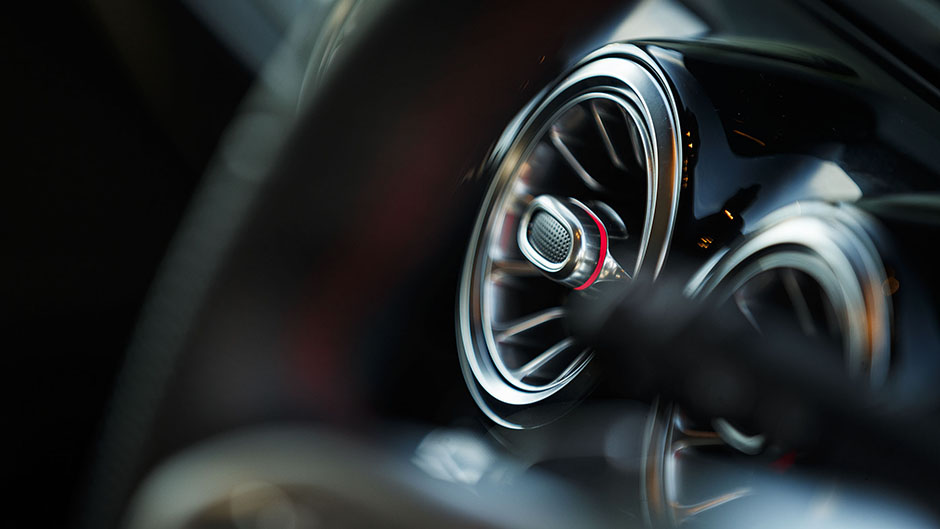
Even on the AMG 19s, the tyres have a bit of sidewall to them, allowing the GLB to bump over the kerb without fear of scraping the rims, unusual these days for an SUV. There is however too much road noise seeping up through the floor, even at 50km/h on chip-type seal. Merc’s transverse platform doesn’t have the same substantial, solid feel as the longitudinal architecture in terms of absorbing the road beneath, and there’s always more road clamour and suspension noise to contend with.
The 250 has enough grunt however. There’s a bit of slurring from the twin-clutch on take up, but it’s then away smoothly and the boost builds quickly. From that point, the twin-clutch is quick and refined with the changes, the laboured shifts of Merc’s previous double-clutcher a thing of the past. Being narrower than the likes of the GLE and GLS makes this GLB far easier to park, and its turning circle is friendly in tight spots too, the steering quick between the stops.
The AWD is the on-demand sort, so it’s primarily front-wheel drive, but it’ll send as much 30 per cent to the rear wheels in Sport mode. In the off-road mode, the distribution can be locked 50/50 to maximise traction, the power delivery and ABS control altered also. Well, supposedly it is but we never took this off the tarmac, just like most GLB owners never will either. And as Mercedes puts it, the GLB is ‘useful in easy off-road terrain’.
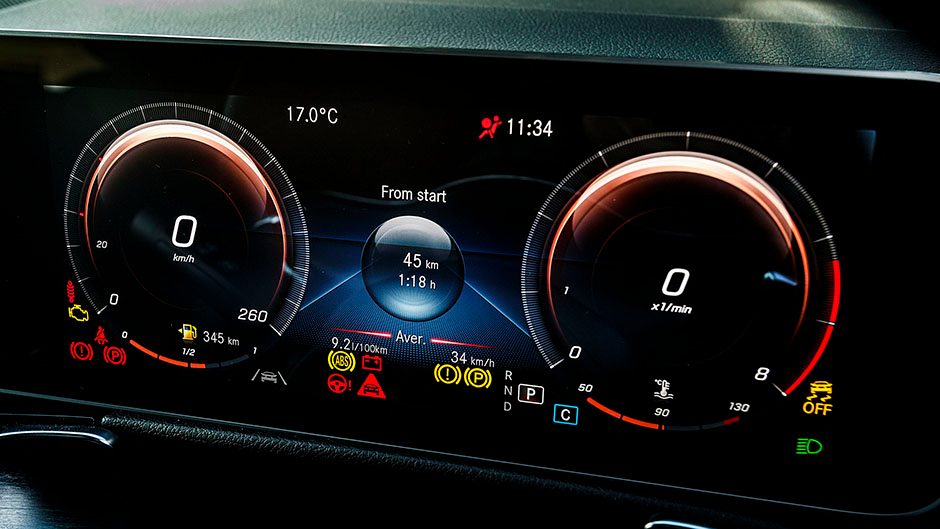
But it is a bit of a surprise package down a winding road. This steers nicely, holds its cornering line well and is quicker than you’d expect. The 2.0-litre has a broad spread of torque, steaming on from 2000rpm and cycles through the rev band earnestly, up to not quite 6000rpm. And the transmission is right on with the shifts, up and down the ratios. It goes alright even in Comfort mode, the roll manageable but it does turn-in better in Sport mode with the dampers firmed. However, the trade-off is feeling a few more of the bumps.
While hardly cheap in the grand scheme of things, it’s a more attainable seven seater with a three-pointed star on the front. And the GLB does prove versatile, big enough while being more city friendly than the hulking, made-for-America GLS. And the way it goes makes the 250 a surprisingly good package.
| Model | Mercedes-Benz GLB 250 4matic | Price | $92,900 |
| Engine | 1991cc, IL4, T/DI, 165kW/350Nm | Drivetrain | 8-speed twin-clutch, on-demand AWD |
| Fuel Use | 0L/100km | C02 Output | 0g/km |
| 0-100km/h | 0.00sec | Weight | 0000kg |


